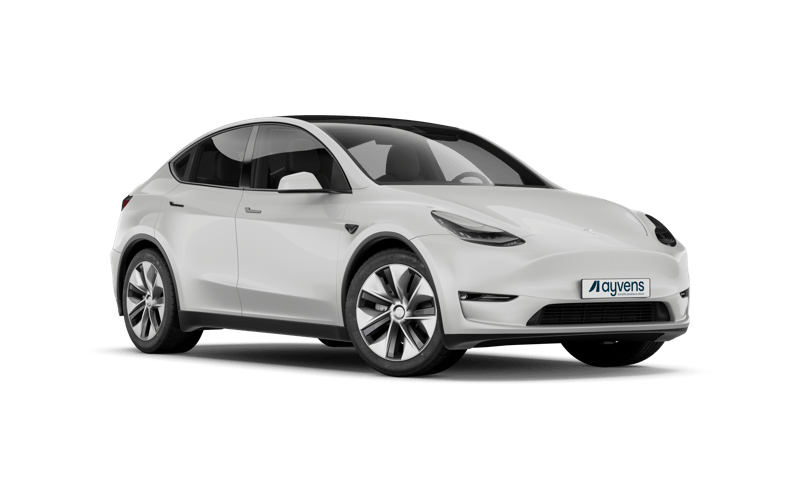
Built for success
Elon Musk thinks his Tesla Model Y could be the bestselling car or vehicle of any kind anywhere in the world. Brisk sales are already being reported in the US and China, the Y’s launch markets.
So far, there’s a lot to like. Starting with the chassis, interior, and powertrain from the smaller Model 3, the Tesla Model Y adds the SUV styling of the Model X, along with extra luggage space and an optional third row of seats to sit pretty at the mid-market level. Spacious, stylish and efficient.

Designed for comfort
The Model Y launches in Long Range format in most markets, followed by the Performance trim. Part SUV and part egg, the Model Y stands out thanks to the brand’s distinctive nose.
A panoramic sky roof emphasizes the feeling of space, and there’s a focus on comfort with heated seats, dual-zone automatic climate control and simulated leather upholstery. Electronics are essential but not excessive, with a 15-inch touchscreen, wireless charger and 15-speaker sound system (plus a glovebox USB-port), as well as embedded entertainment and video games. Like a smartphone, software updates arrive over the air.

Configured for performance
Poised solidly in the middle of Tesla’s line-up, the Model Y is a solid workhorse of an EV with fantastic handling.
Drivers will have to settle for a 0-100 speed of 5.1 seconds on the Long Range versus the Performance’s zippy 3.7 seconds but gain more range. Both have a 75kWh battery with 19 minutes to fast charging.
As with all Teslas, the agile Model Y has a low center of gravity with excellent safety ratings. Out of the showroom, the Model Y comes with Tesla’s Autopilot semi-autonomous driving system as well as pedestrian detection and lane assist, but optional extras are available such as self-parking and a Summon feature. Overall, the Model Y cleverly presents drivers with the best of Tesla in a smart package.
Long Range (2021)
- SUV/SeatsUp to 7
- Electric Range (WLTP)420 km
- Acceleration (0-100k/h)5.1 sec
- DrivetrainAWD
- Battery capacity75.0 kWh
- Fast charge time(42→336 km) 19 min
Performance (2022)
- SUV/SeatsUp to 7
- Electric Range (WLTP)400 km
- Acceleration (0-100k/h)3.7 sec
- DrivetrainAWD
- Battery capacity75.0 kWh
- Fast charge time(40→320 km) 19 min

